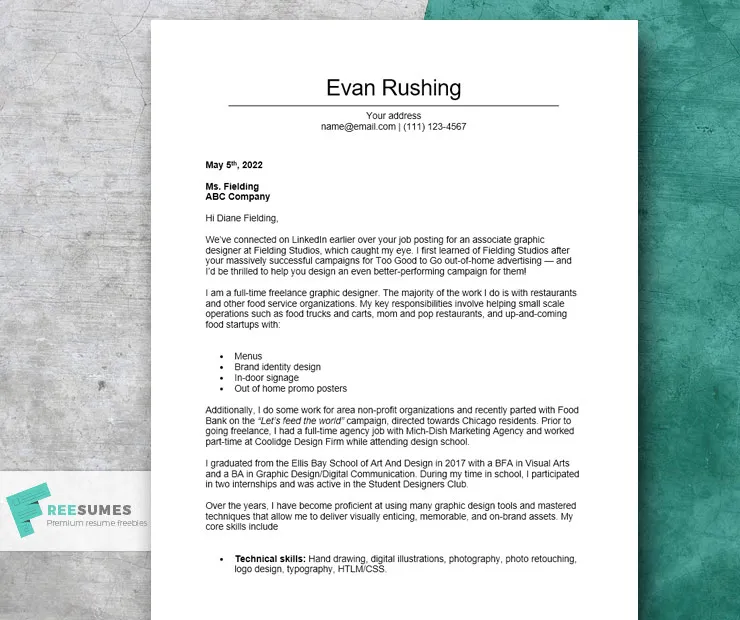Understanding the Purpose of a Graphic Design Cover Letter
A graphic design cover letter is more than just a formality; it’s your first opportunity to make a strong impression on a potential employer. It serves as your introduction, providing a personalized glimpse into your skills, experience, and personality. Unlike a resume, which offers a concise overview of your qualifications, the cover letter allows you to elaborate on your relevant experiences and connect with the hiring manager on a more personal level. It’s your chance to tell a story, showcasing your passion for design and demonstrating why you’re the perfect fit for the role. A well-crafted cover letter can significantly increase your chances of getting an interview by highlighting your unique strengths and demonstrating your understanding of the company’s needs. It’s a crucial tool for differentiating yourself from other applicants and proving that you’re serious about the opportunity.
Highlighting Your Skills and Expertise
Your graphic design cover letter should spotlight the skills and expertise that align with the job requirements. Begin by identifying the key skills the employer is seeking, which you can usually find in the job description. Then, weave these keywords naturally into your cover letter, providing specific examples of how you’ve utilized these skills in past projects. This demonstrates your ability to deliver results and assures the employer of your capabilities. Consider incorporating both technical and soft skills. Technical skills may include proficiency in design software like Adobe Photoshop, Illustrator, and InDesign, as well as knowledge of design principles such as typography, color theory, and layout. Soft skills, such as communication, problem-solving, and teamwork, are equally important. Highlight how you’ve used these skills to collaborate with clients, manage projects, and meet deadlines successfully. Quantify your achievements whenever possible to demonstrate your impact. For example, state how you increased engagement rates on a social media campaign or improved conversion rates on a website design project.
Showcasing Your Design Portfolio
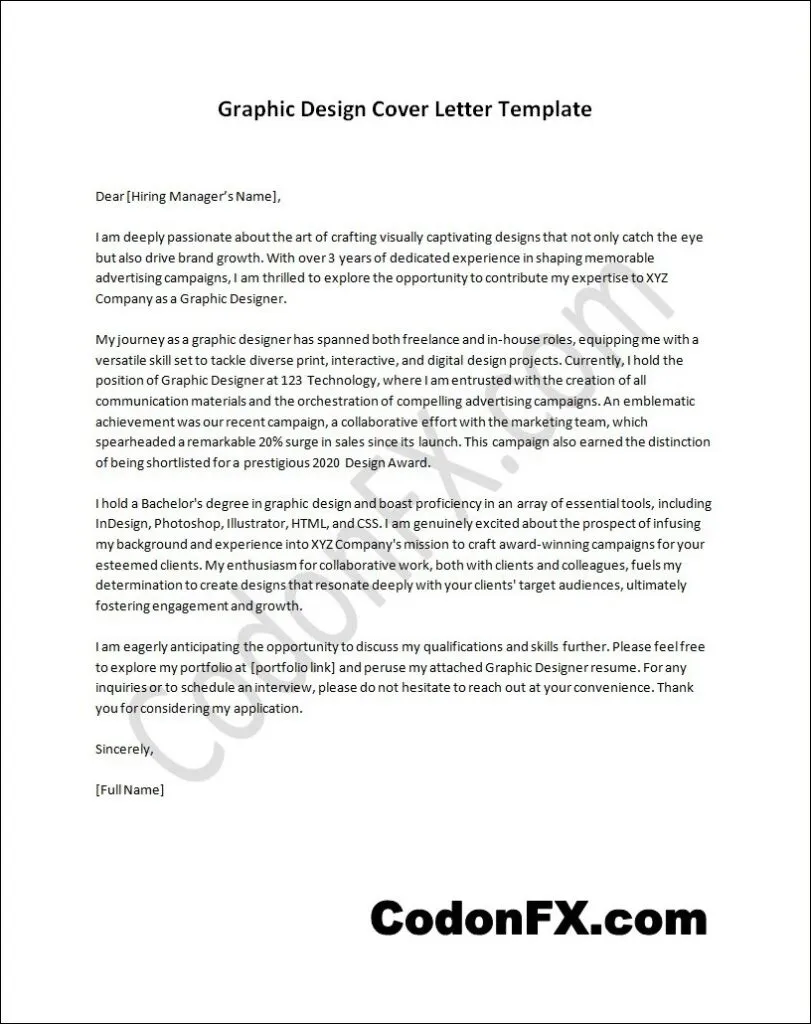
Your portfolio is the visual representation of your skills, so it is essential to integrate your cover letter with your portfolio. Mention your portfolio prominently in your cover letter, providing a direct link or information on how to access it. This allows the employer to immediately assess your design style and abilities. When describing your projects, focus on the specifics that align with the job description. If the job requires experience in branding, showcase your best branding projects. If the role involves web design, emphasize your relevant website design projects. This targeted approach demonstrates that you understand the employer’s needs and have the skills to meet them. Explain the objective of each project, your role, and the outcome achieved. This context helps the employer understand your creative process and the value you bring to a project. Be prepared to discuss your portfolio during the interview, as employers will often delve deeper into your design choices and the rationale behind them.
Tips for Selecting the Right Design Examples
Choosing the right design examples is crucial for a compelling cover letter. Focus on projects that are most relevant to the job description. Highlight work that demonstrates your mastery of the required skills and design principles. If the job posting emphasizes branding experience, select projects that showcase your branding capabilities, such as logo design, brand guidelines, and marketing collateral. If the role is centered around web design, include examples of your website design projects, highlighting your ability to create user-friendly and visually appealing interfaces. Tailor your examples to reflect the company’s aesthetic and industry. Research the company’s brand style and include projects that align with their design philosophy. If the company’s work is known for its minimalist approach, showcase designs with a similar style. Select a few high-impact projects that best represent your strengths and abilities. Quality is more important than quantity. Prioritize projects that you are proud of and that showcase your creative talent and problem-solving skills. Ensure that all examples are of high quality and well-presented to make a strong impression.
Structuring Your Cover Letter for Graphic Design Roles
The structure of your cover letter is as important as its content. A well-organized cover letter is easy to read and makes a positive impression on the hiring manager. It should typically include an opening paragraph, body paragraphs, and a closing statement. The opening paragraph should immediately capture the reader’s attention and state the purpose of your letter. Mention the specific job you are applying for and where you found the listing. Express your enthusiasm for the role and the company. The body paragraphs should delve into your skills, experience, and accomplishments. Use this section to highlight your relevant qualifications and explain how you can contribute to the company. Provide concrete examples of your work, focusing on the skills and projects that align with the job requirements. The closing statement should reiterate your interest in the position and express your eagerness to learn more. Thank the hiring manager for their time and consideration, and include a call to action, such as inviting them to contact you for an interview.
Crafting a Compelling Opening
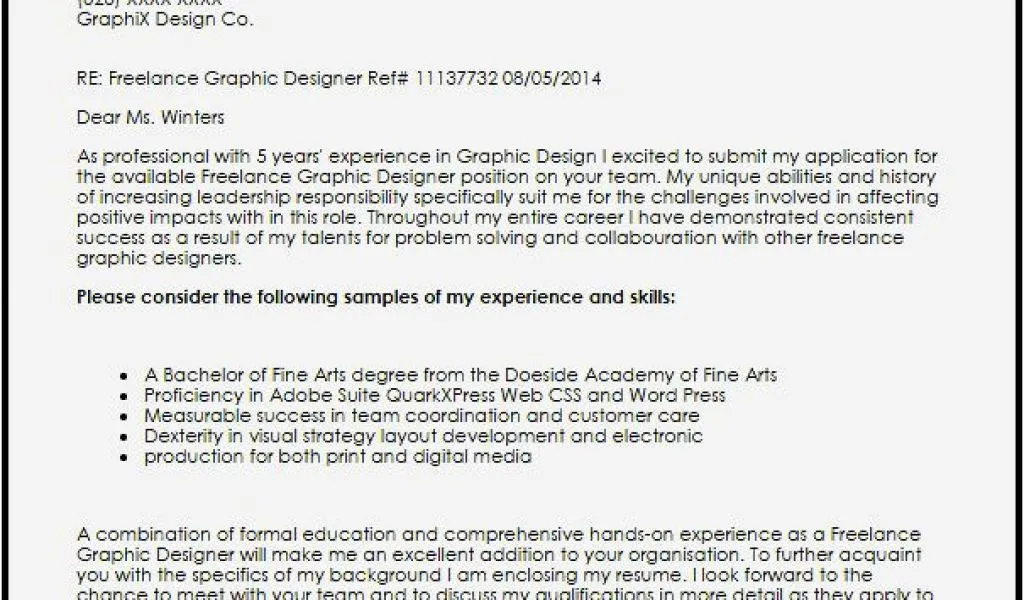
The opening of your cover letter sets the tone and grabs the reader’s attention. It’s crucial to make a strong first impression. Start by addressing the hiring manager by name, if possible. Personalize your letter by researching the company and the hiring manager. A generic greeting can make your letter seem impersonal. Immediately state the position you’re applying for and how you learned about the opportunity. Express your genuine enthusiasm for the role and the company. This demonstrates that you’ve done your homework and are truly interested in the position. Briefly mention what makes you a great fit for the role. Highlight a key skill or accomplishment that aligns with the job requirements. This creates immediate interest and encourages the hiring manager to read on. Keep your opening concise and engaging. Aim for a short paragraph that quickly captures the reader’s attention and conveys your enthusiasm and suitability.
Body Paragraphs that Sell Your Value
The body paragraphs of your cover letter are where you truly sell yourself as a candidate. The body of your cover letter should provide detailed information about your skills and experiences. Explain how your skills and experiences align with the job requirements. Provide specific examples of how you have used your skills to achieve results in the past. Use the STAR method (Situation, Task, Action, Result) to structure your examples and make them more impactful. Describe the situation you were in, the task you were assigned, the actions you took, and the results you achieved. Quantify your accomplishments whenever possible. Include specific numbers or metrics to demonstrate the impact of your work, such as increased website traffic, improved conversion rates, or successful project completion. Tailor your content to match the job description. Highlight the skills and experiences that the employer is looking for. This ensures your cover letter is relevant and demonstrates that you have what it takes to succeed in the role.
Writing a Strong Closing Statement
The closing statement should summarize your interest and encourage further action. Reiterate your enthusiasm for the position and the company. Reiterate your interest in the position and emphasize how your skills and experience align with the company’s needs. Thank the hiring manager for their time and consideration. Express your gratitude for the opportunity to apply and the time they have taken to review your application. Include a call to action, such as an invitation to contact you for an interview. Provide your contact information, including your phone number and email address. Indicate your availability for an interview and any other relevant information. Proofread your entire cover letter carefully to ensure there are no errors in grammar, spelling, or punctuation. A well-written closing statement leaves a lasting positive impression and encourages the hiring manager to move forward with your application.
Tailoring Your Cover Letter for Each Job
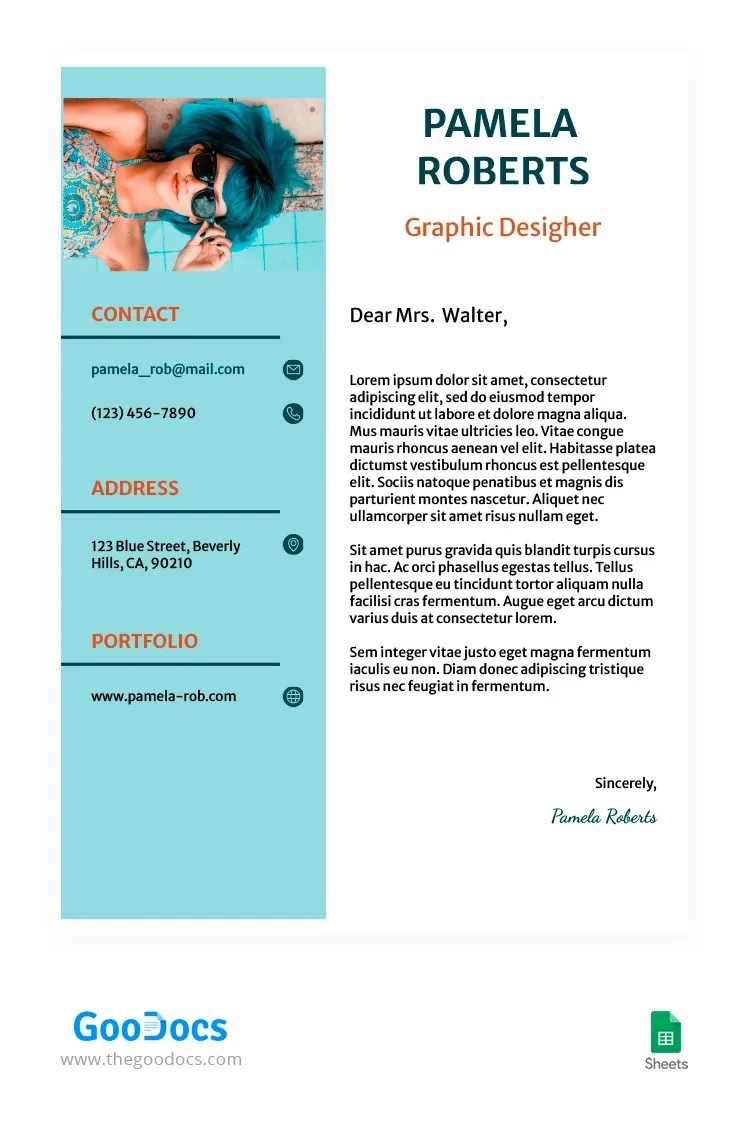
Customizing your cover letter for each job application is crucial for demonstrating your genuine interest and qualifications. Avoid using a generic cover letter template. Personalize your letter to show you’ve taken the time to understand the specific job requirements and the company’s culture. Review the job description carefully and identify the key skills, experiences, and qualifications the employer is seeking. Tailor your cover letter to address these requirements directly, highlighting your relevant accomplishments and showcasing your ability to meet their needs. Research the company before you start writing. Learn about their mission, values, and recent projects to gain insight into their design style and company culture. Refer to the company’s work and design philosophy in your letter to demonstrate that you understand their approach. Use keywords and phrases from the job description throughout your cover letter. This helps your letter align with the employer’s expectations and increases your chances of passing applicant tracking systems (ATS).
Researching the Company and the Role
Thorough research is key to writing a compelling cover letter. Investigate the company’s website, social media, and any recent press releases. This will give you insight into their brand, values, and recent projects. Use these insights to customize your cover letter and demonstrate your understanding of the company’s culture and design philosophy. Review the job description carefully and identify the essential skills, experiences, and qualifications the employer is seeking. Understand the specific requirements of the role and tailor your cover letter to highlight your relevant accomplishments and abilities. Show how your skills align with the company’s needs and explain why you’re the perfect fit for the role. This targeted approach increases your chances of capturing the hiring manager’s attention and securing an interview. By showing you’ve done your homework, you show genuine interest and a commitment to the position.
Adapting Your Tone and Style
The tone and style of your cover letter should reflect the company’s culture and the nature of the role. If the company has a formal culture, use a professional and polished tone. If the company’s culture is more casual, you can adopt a more relaxed and friendly tone. Research the company’s communication style and match your tone accordingly. Use language that is appropriate for the design industry. Use design-related keywords and phrases, and avoid jargon. Ensure your language is clear, concise, and easy to understand. Proofread your cover letter carefully to ensure there are no errors in grammar, spelling, or punctuation. Pay attention to the formatting to ensure it is easy to read. A well-formatted cover letter reflects professionalism and attention to detail. The use of design and typography can make your letter stand out, but make sure to balance aesthetics with readability.
Proofreading and Formatting Your Cover Letter
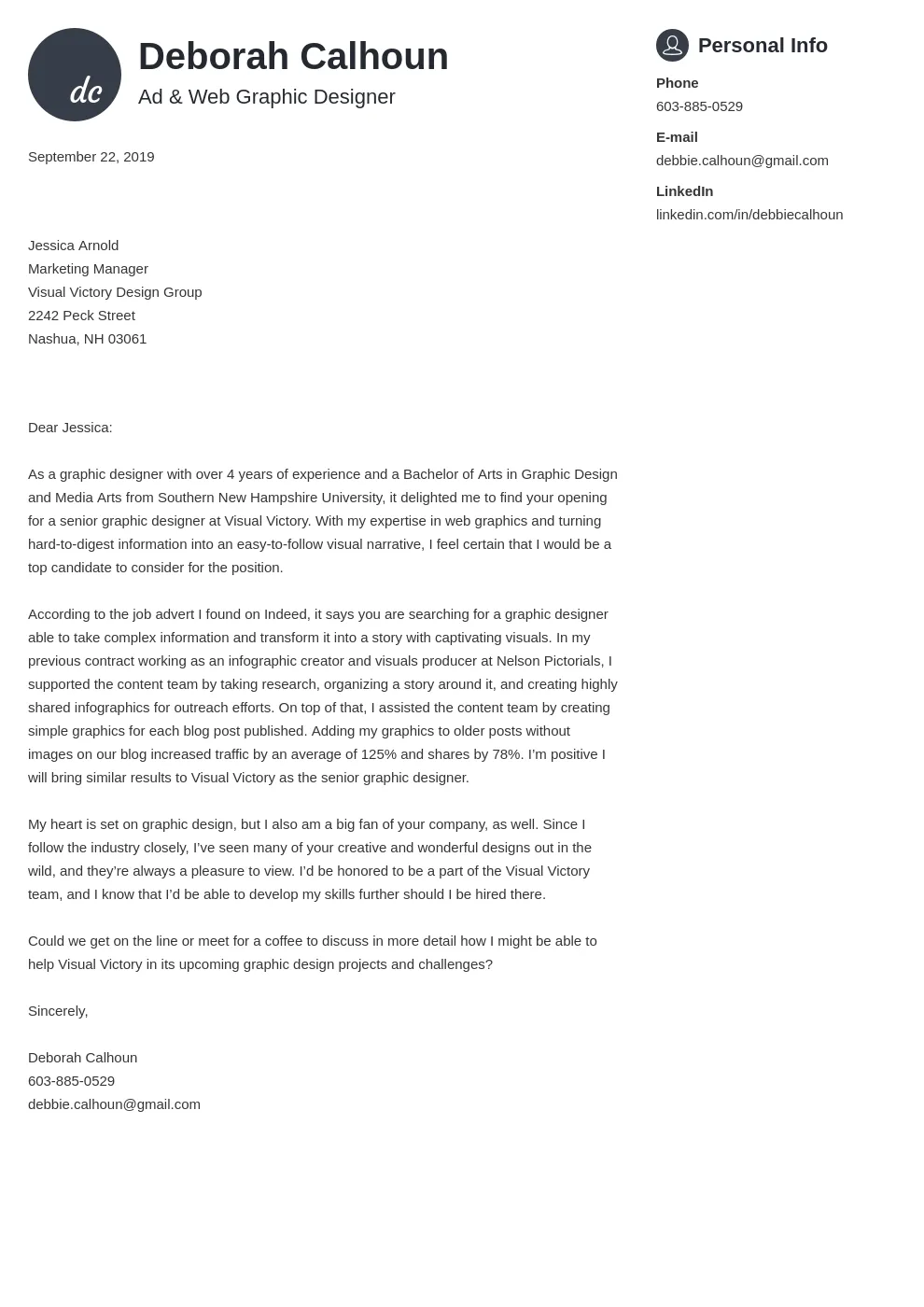
Proofreading and formatting are critical steps to ensuring your cover letter is professional and impactful. Errors in grammar, spelling, or punctuation can undermine your credibility and give a negative impression of your attention to detail. Proofread your cover letter multiple times, and consider having someone else review it for you. A fresh pair of eyes can often catch mistakes you might miss. Pay close attention to the formatting to make your cover letter easy to read. Use a clean, professional font, such as Arial or Times New Roman, and keep the font size consistent. Use headings, bullet points, and white space to break up the text and make it more visually appealing. Ensure your cover letter is well-structured with clear paragraphs and logical flow. Make sure your contact information is accurate and easy to find. Include your full name, phone number, email address, and a link to your online portfolio. Keep the file format professional. When saving your cover letter, use a standard file format like PDF to preserve the formatting and ensure it is accessible on all devices.
Common Cover Letter Mistakes to Avoid
Avoid common mistakes that can hurt your chances. Using a generic cover letter is a major red flag. Always personalize your cover letter to each job application, showing you’ve researched the company and understand the specific requirements. Errors in grammar, spelling, or punctuation can undermine your credibility and convey a lack of attention to detail. Proofread your cover letter multiple times, and consider having someone else review it for you. Including irrelevant information can distract from your qualifications. Focus on the skills and experiences that are relevant to the job description. Avoid excessive self-praise or arrogance. Highlight your accomplishments, but do so with humility and professionalism. Failing to follow instructions can indicate a lack of attention to detail. Read the job posting carefully and follow any instructions for submitting your application. Ignoring the company’s brand voice can make your letter seem impersonal. Mirror the company’s communication style to show your understanding of their culture. Avoid using excessive jargon or industry-specific terms that the hiring manager may not understand.
Formatting Best Practices for Readability
Formatting your cover letter can significantly enhance its readability and impact. Choose a clean, professional font like Arial, Calibri, or Times New Roman, and keep the font size consistent (10-12 points). Use a readable font size for easy viewing. Maintain a consistent font size to make your letter look organized and professional. Use clear headings and subheadings to divide your cover letter into logical sections, making it easier for the reader to follow. Employ ample white space to improve readability. Use bullet points to highlight key skills, accomplishments, and project details. Keep paragraphs concise, breaking them up into manageable chunks. Avoid overly long paragraphs that may discourage the reader. Use a professional layout with consistent margins (1 inch on all sides). This ensures a clean and organized appearance. Include your contact information in a clearly visible location at the top of the letter. Use a PDF file to preserve your formatting when submitting your cover letter. A PDF ensures that your document looks the same on any computer or device.
